The Harrier Jump Jet
Introduction
The Harrier, informally referred to as the Harrier Jump Jet, is a family of jet-powered attack aircraft capable of vertical/short takeoff and landing operations (V/STOL). Named after a bird of prey, it was originally developed by British manufacturer Hawker Siddeley in the 1960s.
The Harrier emerged as the only truly successful V/STOL design of the many attempted during that era, despite being a subsonic aircraft, unlike most of its competitors. It was conceived to operate from improvised bases, such as car parks or forest clearings, without requiring large and vulnerable air bases. Later, the design was adapted for use from aircraft carriers.
There are two generations and four main variants of the Harrier family, developed by both UK and US manufacturers:
- Hawker Siddeley Harrier | British Aerospace Sea Harrier
- McDonnell Douglas AV-8B Harrier II | British Aerospace Harrier II
The Hawker Siddeley Harrier is the first generation-version and is also known as the AV-8A Harrier; it was used by multiple air forces, including the Royal Air Force (RAF) and the United States Marine Corps (USMC). The Sea Harrier is a naval strike/air defence fighter derived from the Hawker Siddeley Harrier; it was operated by both the Royal Navy and the Indian Navy.
During the 1980s, a second-generation Harrier emerged; manufactured in the United States as the AV-8B and in Britain as the British Aerospace Harrier II respectively. By the start of the 21st century, the majority of the first-generation Harriers had been withdrawn, many operators having chosen to procure the second generation as a replacement. In the long term, several operators have announced their intention to supplement or replace their Harrier fleets with the STOVL variant of the F-35 Lightning II, designated as the F-35B. (Courtesy of Wikipedia)
The Rolls-Royce Pegasus, formerly the Bristol Siddeley Pegasus, is a turbofan engine originally designed by Bristol Siddeley. It was manufactured by Rolls-Royce plc. The engine is not only able to power a jet aircraft forward, but also to direct thrust downwards via swivelling nozzles. Lightly loaded aircraft equipped with this engine can manoeuvre like a helicopter. In particular, they can perform vertical takeoffs and landings. In US service, the engine is designated F402.
The unique Pegasus engine powers all versions of the Harrier family of multi-role military aircraft. Rolls-Royce licensed Pratt & Whitney to build the Pegasus for US built versions. However Pratt & Whitney never completed any engines, with all new build being manufactured by Rolls-Royce in Bristol, England. The Pegasus was also the planned engine for a number of aircraft projects, among which were the prototypes of the German Dornier Do 31 VSTOL military transport project. More information can be found at the dedicated Wikipedia Roll Royce Pagasus web page.
Installation, Documentation and Configuration
Installation
The installation process is straight forward. As of this writing, there’s no need to activate the Harrier via a serial number. You just download the Harrier_v1_XPlane1130.zip, unzip is and install it directly in the Aircraft folder or you create a subfolder X-Trident and install the package right here. Up to you!
The aircraft package comes with enough high-quality liveries or paintings. I’ll give you at a later moment a bit more information about that. The default livery, USAF Marines, can be found in the Objects folder of the Harrier, but this is in my humble opinion not intended to be a paint-kit since I haven’t seen a PSD file nor a layered paint file. Hopefully that will be included at a later moment.
Document(s)
The Harrier come with one document – x-trident AV8-B Quick Start guide 1.0.pdf – which is very nice, well put together but in my humble opinion a bit tool limited to understand all the features of this aircraft. According to the developers they are busy with a more extensive manual, hopefully also a tutorial which would help a lot! But this is not the end of the world.
In the quick guide is stated that “The purpose of this “Quick Start” guide is to walk you through the main basic functions of the Harrier. At the time of writing the full manual is still work in progress. If you are an early adopter of the Harrier, chances are this is the only document currently available. If you have any questions please contact us on the X-Trident support forum.”
Me and Andy found a couple of good and interesting manuals on the Web, but like the DCS and Razbam manuals, although they are very nice with a lot of interesting information, be aware that these products deal with a different simulator platform and nobody knows that isn’t or what is modeled. I found one official flight manual at the Public Intelligence.net website. Quite interesting I must say, but keep in mind, interesting or not, it is the official manual and not representing the X-Trident Harrier!
Configuration
The Harrier comes by default with the necessary “equipment” under the wing, but perhaps you don’t like what’s hanging under the wings, or perhaps you need to do a training flight and would like to have a clean wing. In other words, you can equip your Harrier as you want. To do that, search for the CONFIGURATIONS folder in the aircraft package. You’ll find there in total 13 different configurations. Each folder has a AV8B.acf_ file. Copy the file of your preference, and paste it into the Harrier root.
Oops, there’s already the default AV8B.acf and although you didn’t overwrite the file, only one acf file can be active which is thru for the moment, but we didn’t copy our “acf_” for nothing to the aircraft root. So next rename the AV8B.acf to e.g. AV8B.acf.original and then rename the AV8B.acf_ to AV8B.acf. Load the sim and your Harrier has been loaded with different weapons. I checked the quick guide for additional information about these different weapon configurations, but didn’t find any. Hopefully this will be added in the full manual.
Thorough Walk-Around Check
Will it be a simple walk-around check, or perhaps a walk-around inspection or a thorough walk-around check? Whatever is in the name, it will be a thorough check. What’s I’ve seen quickly while making some screenshots, it’s a well modeled with eye for all tiny details Harrier. My beautiful Hawker Harrier is parked somewhere at a remote place at the airport. And yes, it’s a beauty. Even from a distance … oh oh, so gorgeous with so many details. Even from a far distance! But this eye for many tiny details becomes even bigger then you walk towards the aircraft. And honestly, I don’t know where to begin. It looks all so nice, with so many details to discover.
Although Andy will probably discuss the X-Trident menu while doing the basic flight experience, it’s perhaps a good idea to highlight quickly the dedicated popup menus. The menus I’m talking about are accessible via the X-Plane Plugins – AV8 menu. As can be seen on the screenshot below, it has several options of which all are basically explained in the manual. The Show MFD (Multi Function Display) gives you a third floating MFD. Popup versions of the build in MFD are accessible via clicking the cockpit MFD.
The Remove Before Flight allows you to remove all the covers, the beautiful shaped engine inlet cover and the wheel blocks. All other options in the AV8 menu are in detailed explained in the manual.
How real can it be?
Perhaps the realistic look and feel of the X-Trident Harrier has to do with the paintings, but it’s of course not only the painting that can make or break a model. The 3D modelling is also well done. Anyway, the aircraft package comes with a lot of high-quality paintings, painted by Christoph_T, DarkAngel1010 and I think the a couple of paintings from the developer themselves.
Let me highlight then for you:
- GR9 ZD379 1Sqn Wintercamo 2004 (by Christoph_T)
- GR9 ZD993 Royal Navy Black (by Christoph_T)
- GR9 ZG477 1Sqn
- Harrier 55 (VMA-231)
- Harrier 164557 (VMA-542) DarkGrey (by Christoph_T)
- Harrier 165389 (VMA-231) DarkGrey (by Christoph_T)
- Harrier 165567 (VMA-513) Nightmares DarkGrey (by Christoph_T)
- Harrier Marina Italiana
- VMA-214 Blacksheep (by DarkAngel1010)
- VMA-513 Nightmares lightning (by DarkAngel1010)
- Wolves (by DarkAngel1010)
Ok, back to the question; how real can it be?
When I stand in front of the Harrier, I almost got the feeling I’m looking to the real Harrier AV-8B. The landing gears are all modeled with great precision and they all have some weathering which is by the way applicable for the whole aircraft. You can see that the developers and painters wanted to create something that isn’t new, that isn’t yet build.
When I position myself a bit to the side of the Harrier near the canopy and engine inlet cover, I’m so impressed by how this is made. The red engine cover inlet protector is gorgeous. I can’t find any other word that reflects this. At many places you see readable text although at some places it’s placed mirror image. Hopefully that can be solved with an update. Besides that, looking from the ground to the canopy … wow …. so detailed!
On the left-hand side, but also applicable for the right-hand side, you can clearly see the cold and hot outlet nozzles that gives the Harrier the possibility to act as VTOL. Not sure if you’re familiar with VTOL aircraft, but VTOL actually means that the Harrier can make a Vertical Take Off and Landing. Since it’s also a STOL aircraft, the S stands for Short. Anyway, next of the nozzles you see the fully loaded Harrier with on each side of the wing bombs.
By itself a bomb isn’t so spectacular however, the way the bombs and construction that hold each bomb to the wing, is awesome. So details and after minutes of staring to each construction I can only conclude; the developers did a great job to make this as real as it gets. Add to this a slightly weathered painting and you got a gorgeous modeled Harrier AV8B.
When you walk around it, and in my case towards the wing, you’ll noticed that the aircraft stays very low to the ground and that gives you and me the possibility to check without a stair the upper wing surface. Result; well done! And not only the wing structure looks nice, also the small wing landing gear. Weird when you look to it and oops, there’s also a single landing gear in the middle of the fuselage.
Because of only one landing gear in the middle of the fuselage, there’s a need to have those two wing gear constructions. The gears itself don’t look odd, their position is odd and the way they are retracted is odd too, but odd or not, it’s modeled as real as it gets. Although the wing gear is simple, it looks great with eye for details, but that not new anymore. That’s what I’ve said before.
I mentioned this already before; the weathering is done in a realistic way and that’s also the case at the tail. I haven’t checked all included liveries but I think that in one way or the other, this weathering is everywhere the case. The only thoughts so far are the three lights at the end of the fuselage cone. I may assume these are navigation lights or … not sure, but the glass or plastic looks so dull.
Via the right-hand wing I walk to the canopy and use the build in stair to have a look into the cockpit which is positioned in the open position. You’ll notice that when you play around with the canopy, that when you close the canopy, the build in stairs are retracted and visa versa extended then the canopy opens. And oh oh, while hanging against the fuselage, standing on one of the build in stairs, the modeled 3D cockpit looks great.
The same weathering is also visible in the modeled cockpit. Looking to the front thus the instrument or tactical panel, in one word gorgeous. But the same applies when I look to the cockpit construction behind the ejection seat. And yes, even the ejection seat comes full with tiny details.
I think it’s time to check out the modelled cockpit or tactical center, right?
Interior Modelling
Entering the cockpit prior to a flight the military appearance and general wear and tear marks are immediately apparent. The interior is very detailed with different textures and materials cleverly modelled and in contrast with each other. Colours are vivid and realistic with the mainly metallic and toned down surroundings typical of a military aircraft.
All instruments and signage are clear and legible with surface reflections and switch and button definition of a high quality. Most switches and knobs are modelled to be operative and some are explained in the Quick Start Guide. In addition hovering the mouse over instruments and switches creates a guide as to how that particular item works and moves and also adds a label to explain exactly what it is for.
Given that this is a military cockpit, and therefore different from those recognised in the GA environment, this is very useful. Using these guides along side the Quick Start Guide does help the pilot to work the cockpit, but as the full manual is a work in progress it is difficult to carry out correct processes and to easily locate controls. The developers have been clear that the guide provided is limited and other manuals can be found on line that help the user learn the aircraft and instruments but they are not bespoke and do not cover all aspects of this particular model.
The model also has an extensive plug in that allows the user to open the MFD, load flight plans, ground objects and targets, initiate smart view, change effects, jump to an aircraft on a carrier or set for vertical take-off, set the active com radio, control lighting, sound and load the moving maps for the MFD.
It is well worth exploring these menus before taking a flight. Smart View predicts head movements to maintain the view the pilot would use. The canopy can be opened by the release of the lock lever and then pulling on the canopy handle and closed by reversing the process and it can also be controlled via a slider in the AV8 plug in, flight sub menu. The Head Up Display is also very clear and legible regardless of the level of zoom.
Views from the cockpit through the canopy are crisp and clear. The ejector seat is also modelled in detail and looks very impressive. At periods of low light the interior lighting can be set via the interior lighting controls in the right console. The cockpit looks extremely effective for night flying. A very realistic interior modelled to high quality and with a considerable amount of support for the user included.
Sound
Loading the aircraft with engines running immediately creates the jet whine typical of military aircraft, creating an authentic atmosphere in the model, and the volume and tone of this changes inside or outside the aircraft or with the canopy open. Switches, knobs and dials have their own distinctive sounds. The warnings and alarms certainly catch the attention. Sounds are realistic in flight with various switches and knobs having their own noises and the engine whine varying in pitch with throttle changes and manoeuvres. The undercarriage movement can be heard with a reassuring thud when the action is completed.
Systems
The model information in the X-Plane.org store highlights the following systems supplied with the model:
Weapon systems
– CCIP bombing mode
– CCRP bombing mode
– Weapon control panel
– Selective jettison
Wikipedia explains that Constantly-Calculated Impact Point (CCIP) is HUD symbology where the point of impact is continuously shown on the HUD. A small pipper indicates where the bombs would land if dropped at this instant. The pilot flies the plane to place the pipper over the target and then pickles to release the bombs. Constantly-Calculated Release Point (CCRP) is HUD symbology where the target is pre-planned and the desired release point is calculated. The pilot flies a vertical bearing line to line to line up with the target, and then the point of release is calculated. The pilot holds down the pickle button and the bombs drop automatically at the correct release point.
Weapons are controlled by the weapons control panel positioned in the instrument panel ahead of the pilot. The panel has facilities to control how a package of bombs are dropped and which of the aiming methods are used. This panel also allows for the selection of stores to be jettisoned and also for the use of the AIM 9 seeking head. The panel allows for both air to ground and air to air weapons to be used.
Navigation
– GPS (with moving maps, in scale with NAVAIDS)
– TACAN (A/G and A/A)
– VOR/ILS
A tactical air navigation system, commonly referred to by the acronym TACAN, is a navigation system used by military aircraft. It provides the user with bearing and distance (slant-range or hypotenuse) to a ground or ship-borne station. It is a more accurate version of the VOR/DME system that provides bearing and range information for civil aviation.
Very High Frequency (VHF) Omni-Directional Range (VOR) is a type of short-range radio navigation system for aircraft, enabling aircraft with a receiving unit to determine its position and stay on course by receiving radio signals transmitted by a network of fixed ground radio beacons. These can be combined with the TACAN system to create VORTAC points.
Navigation maps and beacons can be displayed in the Multifunction Display Panels and navigational information is also provided in the HUD. The ILS system is described in the controls as the All Weather Landing system and is input through the controls in front of the pilot in the panel.
Radar
– Air to air, with radar lock on targets
– Terrain mapping radar
– RWR
Radar warning receiver (RWR) systems detect the radio emissions of radar systems. Their primary purpose is to issue a warning when a radar signal that might be a threat, such as an fighter jet’s fire control radar, is detected. The warning can then be used, manually or automatically, to evade the detected threat.
Systems
– MFDs (plus one “floating” MFD – it is possible to click-to-lock A/A targets)
– UFC and CDU
– Detailed HUD with master modes (VR friendly/collimated)
– Radios
– Autopilot and selective SAS
There are two multifunction displays in the cockpit, to the left and right of the pilots forward vision and a third floating one. The Quick Start Guide explains how these displays work together and also independently. These are very clear, easy to read and carry a considerable amount of information. The menu button at the bottom allows access to various sub menus relating to engine, radar, map, navigation and mission information.
It is useful to check through these before flying the aircraft to become more accustomed as to where to find various items. The MFD can also show targets and present a moving map, although, as explained in the quick start guide, this will impact on frame rates in the model. Maps are provided for areas of America, Hawaii and Europe and can be loaded from the AV8 plug in menu. The X-Trident Tornado also has a moving map display and I copied and pasted an additional map for Sardinia into the plug ins map folder. I reloaded the aircraft and the map was available.
The Tornado manual explains how the user can produce additional maps if required and therefore I suspect this advice will also be provided once the full manual is provided for the Harrier. I will not reproduce that advice here as I am not certain that the same method of production is applicable to this model. The MFD also illustrates targets where applicable and these are also loaded from preset lists in the plug ins menu. Again the X-Trident Tornado manual explains how a user can create their own target lists and place targets on the ground and I feel it will be likely the upcoming Harrier manual will do the same.
The Up Front Controls (UFC) and the Control Display Unit (CDU) is the interface device unit used to access the Flight Management Computers (FMC) and sit in front of the pilot in the centre of the instrument panel. The Quick Start Guide covers the use of the UFC and explains the meaning and function of the buttons. The ILS system is input here as are the frequencies of the radios.
Autopilot controls and the Stability Augmentation and Attitude Hold System are positioned to the left of the pilot in the console. The autopilot maintains stability in the aircraft and assists in attitude and altitude hold.
Flight Experience
The quick start guide provides some suggested settings for joystick and keyboard input. I set up a new profile in X-Plane for the controllers as this is such a unique aircraft. I used the search box to find the commands and then associated them with keyboard and joystick buttons to suit my use. The choice of the controller inputs very much depends on personal choice and the users own controllers. This was well worth doing before attempting to fly the model.
The Quick Start Guide explains that when loaded at the end of a run way with engines running the model is ready to make a conventional take off. I followed the instructions, put on full power and rotated at 150knots. The aircraft took off very smoothly and the head up display, in Nav mode, gave me all the information I needed. I completed a circuit but approached with too much altitude. I went around again, certainly not disappointed with the opportunity to fly some more, and made a second approach and successful landing.
The aircraft responded well to all inputs and the information provided by cockpit displays was all very useful. The warnings and alarms were clear and easy to follow and I was able to recover from the couple of mistakes I made. This certainly is a great model to simply load and fly and the aircraft gives the pilot a lot of support and information. Taxiing was straight forward and the aircraft responded well to inputs on the ground.
The Quick Start Guide then encourages the user to try a vertical take-off, after all that is one of the attractions of this aircraft. I had a few attempts before I actually succeeded in a smooth vertical climb and then transition to forward flight. It was easy to lose power by transitioning too early but there is a great sense of achievement in a complete and safe take off.
The next stage was a vertical landing! The Quick Start Guide gives no assistance here. My first attempt did not end well but did give me a chance to operate the eject sequence. I had programmed a keyboard button for eject and it worked as the canopy shattered and the pilot left the aircraft.
I found the rate of descent more difficult than the transition from forward flight to hovering flight. The gradual change of vector angle caused the aircraft to slow and move in to the hover but then reducing power caused a rate of descent that constantly led to too much of a heavy landing. I practiced this by carrying out of a vertical take-off and then lowering the aircraft back down. Even this was not easy as the balance to create a smooth slow descent was difficult to find. Well we know what is said about practice and that’s what it takes. I cannot guarantee I can get it right every time yet but the number of safe landings is increasing.
The other flight offered by the plug-in flight menu is a carrier flight. I used the plug-in quick start and made a conventional take off. This went well and the Harrier climbed well from take off without the cat shot. The model fitted in very well with the carrier surroundings and scenery. I completed a circuit and lined up with the carrier but found the landing very difficult as I could not match speed, lift and nozzle position, as a normal approach would be too fast.
This is not a complaint about the model as I am sure this is not a straight forward procedure for those doing it for real but the limited information in the Quick Start Guide, and the fact that other manuals were not bespoke, meant I had to experiment rather than follow a procedure. I tried several carrier approaches from Special Starts and still struggled. This is not to say this is not possible, just that I need much more practice.
I then decided to carry out a vertical take-off from the carrier. Pressing both options in the plug in flight menu loaded the aircraft on deck and ready to carry out a vertical take-off. I lifted off as I had done on land and all went well. I was positioned at the aft of the ship and therefore take off was easier as the ships main structures slowly moved away from me as the ship moved forward.
I then attempted a vertical landing. I had enough challenges on an airfield and with the carrier moving and my issues with combining vector angle, thrust and speed I was not successful in any of my attempts and as the manual has not yet been completed I could obtain little further advice for this model. I fear I would make this review very late if I had persisted in my practice, but I enjoyed the challenge and will continue to try to achieve a successful landing.
Respect to those who train, learn and do this for real as when they get it wrong they are risking life and limb and they cannot simply reload their aircraft.
One manual I downloaded, the DCS Guide to the Harrier, provided a checklist for a cold and dark start and flight. I thought I would work through this and test the weapons in flight to use the model in as much detail as possible and to assist users in cold starts prior to a full manual being available. I approached the aircraft with its remove before flight equipment attached and once in the cockpit I had these removed and closed the canopy, both through the plug in flight menu.
Starting from the rear of the left console and moving forward I set the Lift Improvement Device System (LIDS) to normal, switched the oxygen on, set the stability augmentation switches to on and ensured the anti-skid switch was set to on. I ensured the parking brake lever, next to the throttle was set to on and then moved around to the front of the right console and ensured the battery and generator switches were set to on and that the voltmeter was reading at least 24.5 volts.
Moving back to the left console alongside the pilots seat I set the Engine RPM switch to low, the Engine Fuel Control Switch to Pos 1, the Left and Right Pump switches to normal and the Fuel Flow Proportioner switch to on. All switches worked appropriately and responded to mouse inputs, although sometimes I had to click at the correct angle for this to happen. An alarm sounded when I positioned the fuel proportioner switch in the wrong place.
Moving forward again on the left console I set the JPTL switch to on, the Manual Fuel Switch to off, the throttle to off, the Nozzle Position Lever to aft then moving to the rear left of the pilots seat I checked the Fuel Shutoff Handle was down, set to allowing fuel and the Digital Engine Control System was set to on, although the latter was fixed in the on position.
Moving back to the front of the right console I ensured the APU generator switch was on, that APU advisory light was on and that the APU Gen light was out. I then set the right MFD to engine information. I went back to the front of the right console and switched the Engine Start switch to on. I could hear the engine start to build up and set the throttle to ground idle position and set the nozzle position to 10 degrees. The manual explains that doing this reduces wear on the tail plane due to excessive heat and exhaust acting on the control surfaces.
I checked exhaust temperatures and hydraulic pressures as instructed. I found the seat ground safety lever to the right of the seat and established this was not modelled to move. At the front of the left console I set the Flaps Power switch to on and kept the flaps at auto as recommended by the Quick Start Guide for take-off. To the right of the control panel I set the Radar Warning Receiver to on, the Expendables Decoy Dispenser to on and the electronic countermeasures switch to standby.
I set the left MFD to Nav mode and loaded a flight plan. This is done via the pug in flight sub menu and loads from X-Plane FMS plans folder which is in the outputs folder in X-Plane. There are some pre-prepared routes in there which demonstrate the format of these plans so the user can write their own or use a plug in such as Goodway to do it. I switched the Radar Altimeter to on ensured the HUD was set correctly in terms of brightness and display and switched the probe heat on.
To taxi I moved to the front of the left console and ensured Anti-Skid was on and the Vertical Short Take Off and Landing Mode was selected. I set the trim to 4 degrees stabiliser nose down. I taxied to the runway and completed a conventional take off. This went well and the aircraft climbed and manoeuvred very well.
I set the MFD to display the flight plan and found it easy to follow. I hoped to lock the air to air missiles on an enemy target, having loaded an enemy aircraft through the X-Plane main menu and was pleased to find the aircraft indicated on the radar screen and also RWR screen. I adjusted the range of the radar screen so the targets were separated across the screen and ensured I had AIM120 missiles on the pylons as the default AA missiles are sidewinders. I used the pop out MFD to display the radar screen and clicked on the target aircraft and locked on to them using the buttons.
Once locked I fired the missile and successfully shot down and enemy aircraft. All of this is fully animated and can be watched by using the track weapon external display. I followed the flight plan to my destination and made a successful conventional landing.
I finally made a trip to Hawaii to use the preloaded targets to use air to ground weapons. The targets load, via the plug-in flight menu, and appear in the MFD display. Targeting and aiming work as described earlier with the different systems and weapons release is timely and weapons can be tracked to the target. Like everything the aim and accuracy improve with practice but the weapon system adds much to the model and creates its own set of challenges. Again this will be probably more realistic and perhaps easier once the full manual is released.
A very accurately modelled aircraft creating and illustrating the challenges this unique aircraft presents but also demonstrating its versatility. It is possible to jump in and fly this aircraft in a conventional manner, to fire weapons and navigate. The aircraft provides the user with large amount of information which, when understood, really does help to fly he model.
The aircraft becomes more and more challenging as its full capability is explored and the sooner the bespoke manual is available the better users will be able to fly the model to its full envelope. A joy to fly but very challenging to completely master, just like the real thing!
Summary
This review is written for you by Andy Clarke and Angelique van Campen. “Who did what” isn’t important! What is important is the contents. We used both X-Plane 11.31r1 on macOS Mojave and X-Trident Harrier package version 1.0.
Although I’ve seen a couple of glitches in the 3D cockpit modeling where “openings” to the outside are visible, I’m very happy with the overall 3D modeling. The provided paintings are stunning and worth the X-Trident Harrier. As mentioned already in the review, the developer is busy with a more thorough manual that covers a bit more than what it is now. I have faith in the outcome and hopefully we’ll see that soon.
The interior of the aircraft has the very utilitarian look of a military aircraft but does not lack detail or clarity. This creates a very realistic atmosphere and environment when flying the model. The detail is complimented by a very good sound package which brings the instrumentation to life and confirms various actions carried out in cockpit. Other sounds such as the warnings and engine noise are also to a very high standard.
The model is provided with a large amount of operating controls and instrumentation throughout allowing the user to become immersed in all the different activities connected with an aircraft of this type. The systems modelled throughout the aircraft are extensive and the developers have clearly put a lot of effort and focus on making these systems as close to the real thing as possible. The fact that the manual is a work in progress does throw up some challenges in using all of these systems and, as in the real thing, they take a while to learn.
Indeed the amount of information provided, and the various sources created to present it, can be overwhelming at first but with practice these systems augment and support flying the model rather than making it difficult. When flown in a conventional manner the aircraft is fairly straight forward and easy to fly and this is the manner in which the Quick Start Guide encourages the user to start.
The unique nature of the capabilities of this aircraft will likely to be one of the attractions of users to it but, as in the real aircraft, these skills will take longer to acquire. This does not detract from the model, as it can be flown and enjoyed without them, and all other systems and detail such as radar, weapons release and autopilot all work however the aircraft is flown, but vertical take-off and especially landing will challenge all users when trying to achieve a level of competence.
The enjoyment of this model is also enhanced by the various weapons systems which add an extra area of interest and another skill area to be achieved. A highly entertaining and challenging model which is straight forward and enjoyable to fly at its most basic level but brings layer and layer of challenge to users of levels of experience.
More information of the X-Trident Hawker Harrier can be found at the dedicated X-Plane.Org store page. As of this writing – February 2019 – the X-Trident Harrier cost you USD 38.95. In case you have any questions or suggestions, please refer to the X-Plane.Org X-Trident support forum.
Feel free to contact me if you’ve got additional questions related to this impression. You can reach me via email Angelique.van.Campen@gmail.com or to Angelique@X-Plained.com.
With Greetings,
Andy Clarke / Angelique van Campen
| Add-on: | Payware X-Trident Hawker Harrier |
|---|---|
| Publisher | Developer: | X-Plane.Org | X-Trident |
| Description: | Realistic rendition of the Hawker Harrier |
| Software Source / Size: | Download / Approximately 1.4GB (unzipped) |
| Reviewed by: | Andy Clarke and Angelique van Campen |
| Published: | February 19th 2019 |
| Hardware specifications (Angelique): | - iMac Pro - Intel 3GHz Intel Xeon W / 4.5Ghz - Radeon Pro Vega 64 16368 MB - 64 GB 2666 MHz DDR4 - 1 internal shared 1TB SSD (Big Sur 11.x) - 1 internal shared 1TB SSD (Bootcamp Windows 10) - 1 external 2TB LaCie Rugged Pro SSD (Big Sur 11.x) - Saitek Pro Flight System X-52 Pro and X-56 Rhino - Honeycomb Alpha Flight Controls - Honeycomb Bravo Throttle Quadrant |
| Hardware specifications (Andy): | - iMac Intel i5 27" - 3.5 GHz Intel Core i5 - AMD Radeon R9 M290X 2048 MB - 16 GB 1600 MHz DDR3 RAM - Logitech Force 3D Pro |
| Software specifications (Angelique): | - macOS Big Sur (10.15.x) - X-Plane 11.5x |
| Software specifications (Andy): | - macOS Mojave 10.14.x - X-Plane 11.31 (64 Bit) Private Use - A variety of freeware and payware airports |
5 Comments
Submit a Comment
You must be logged in to post a comment.


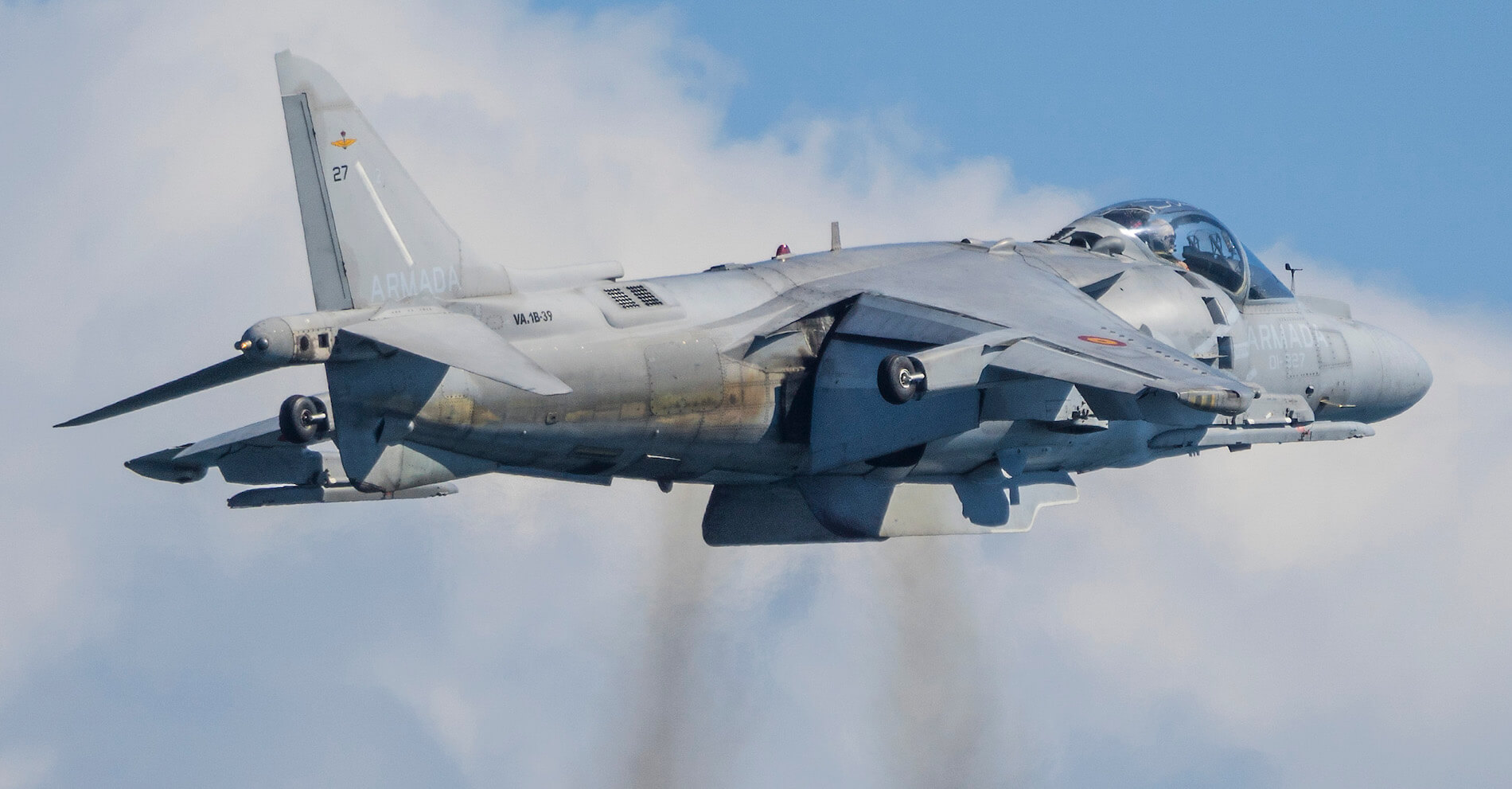



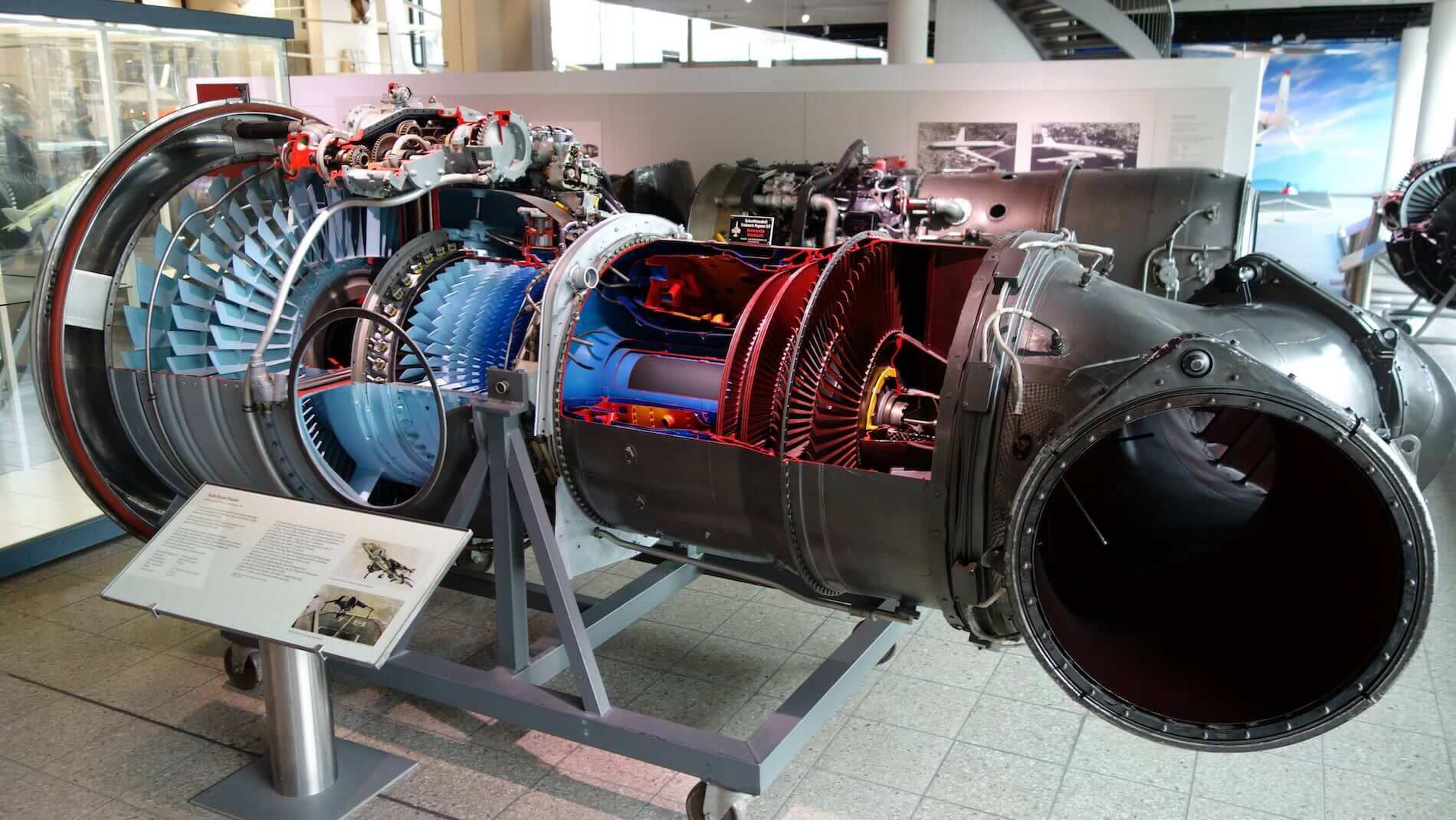




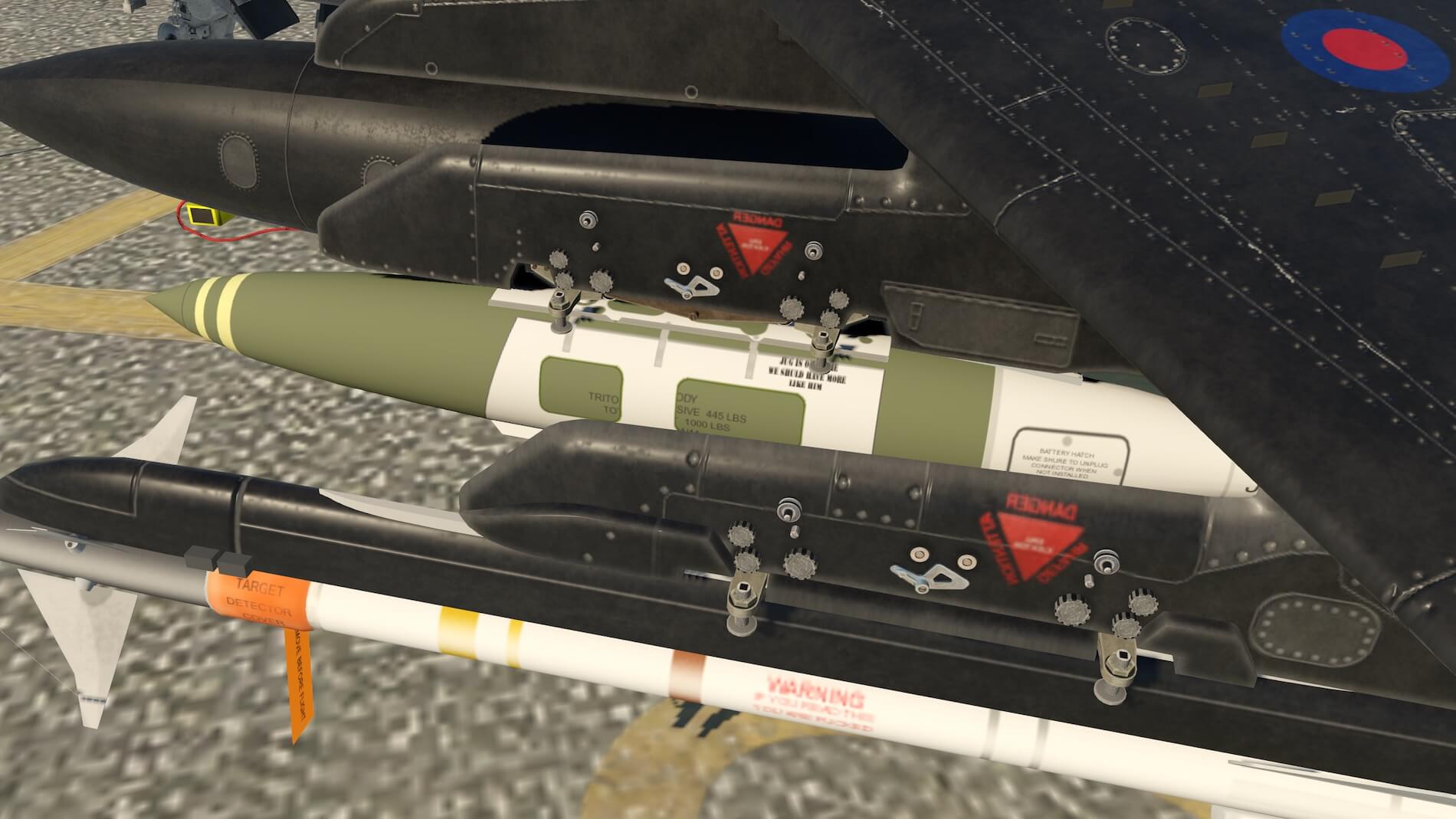


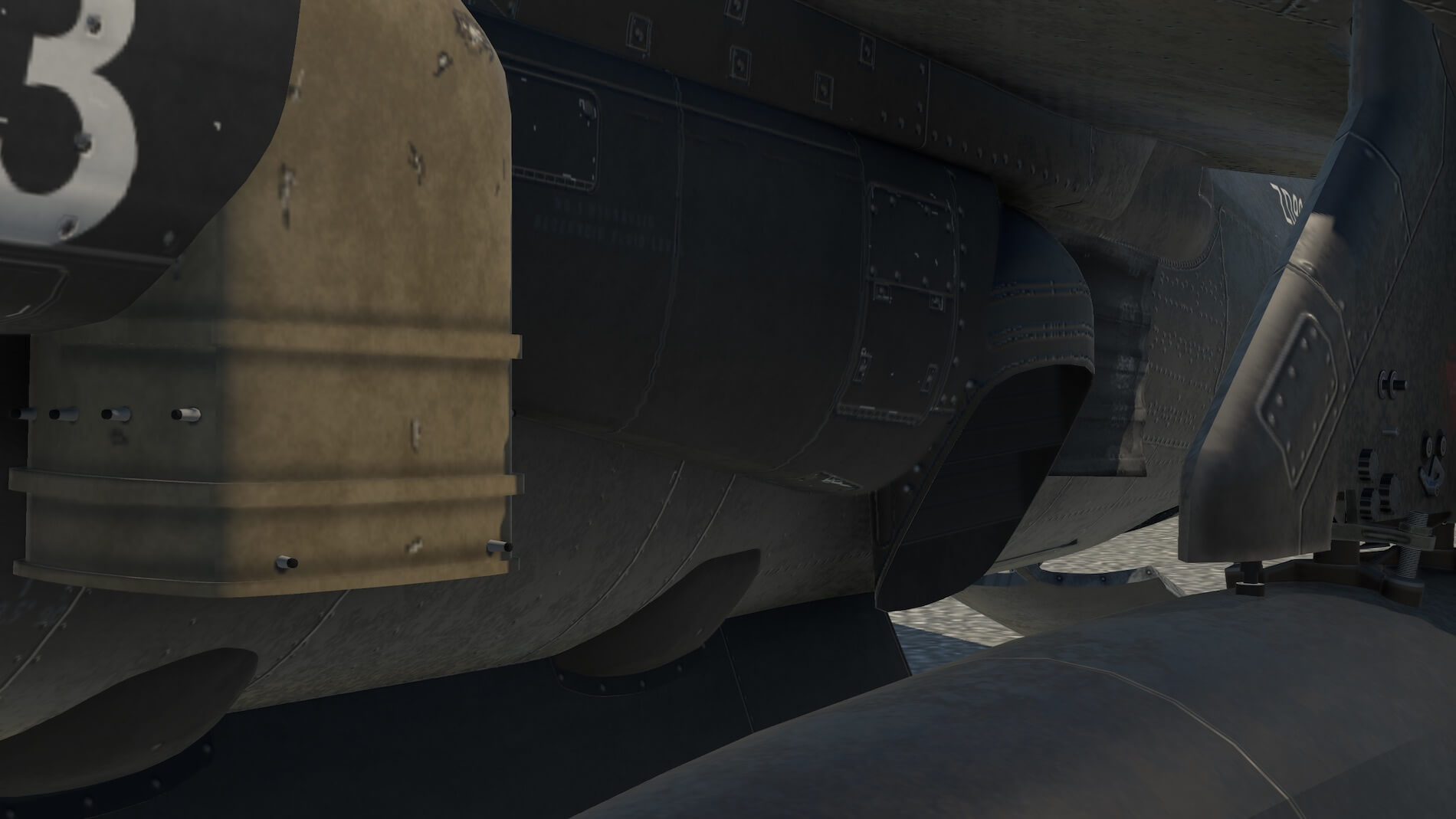


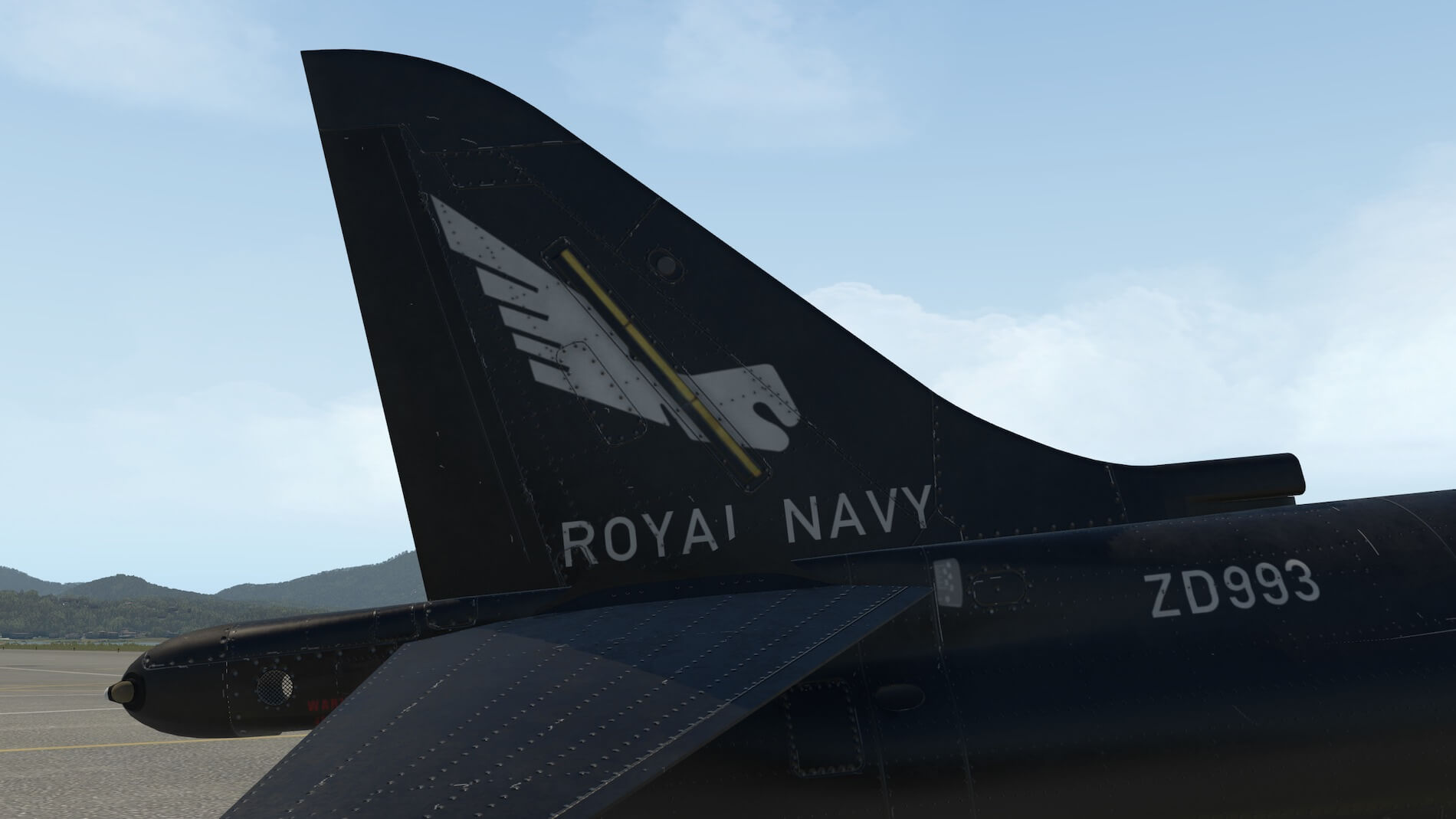
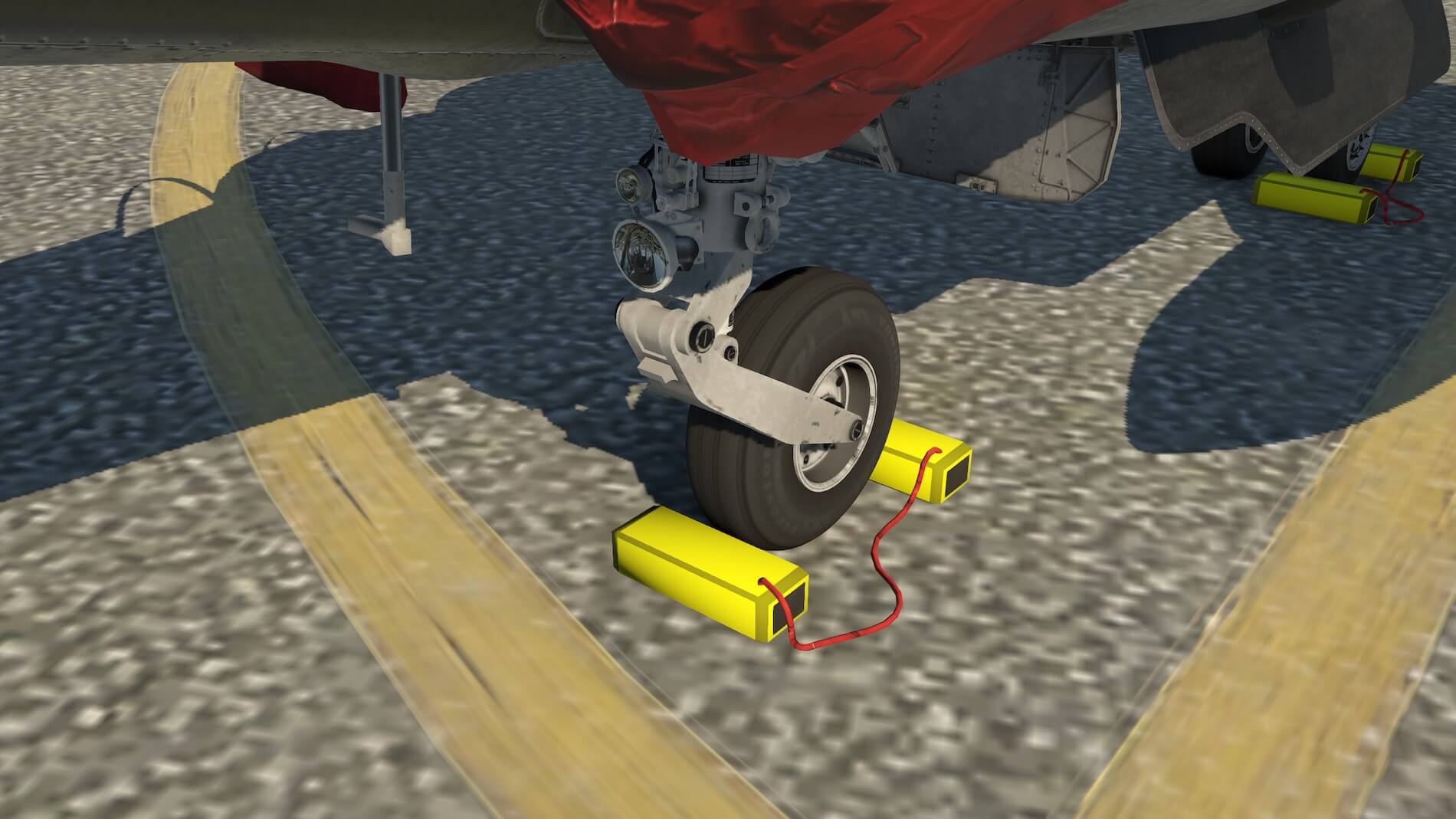
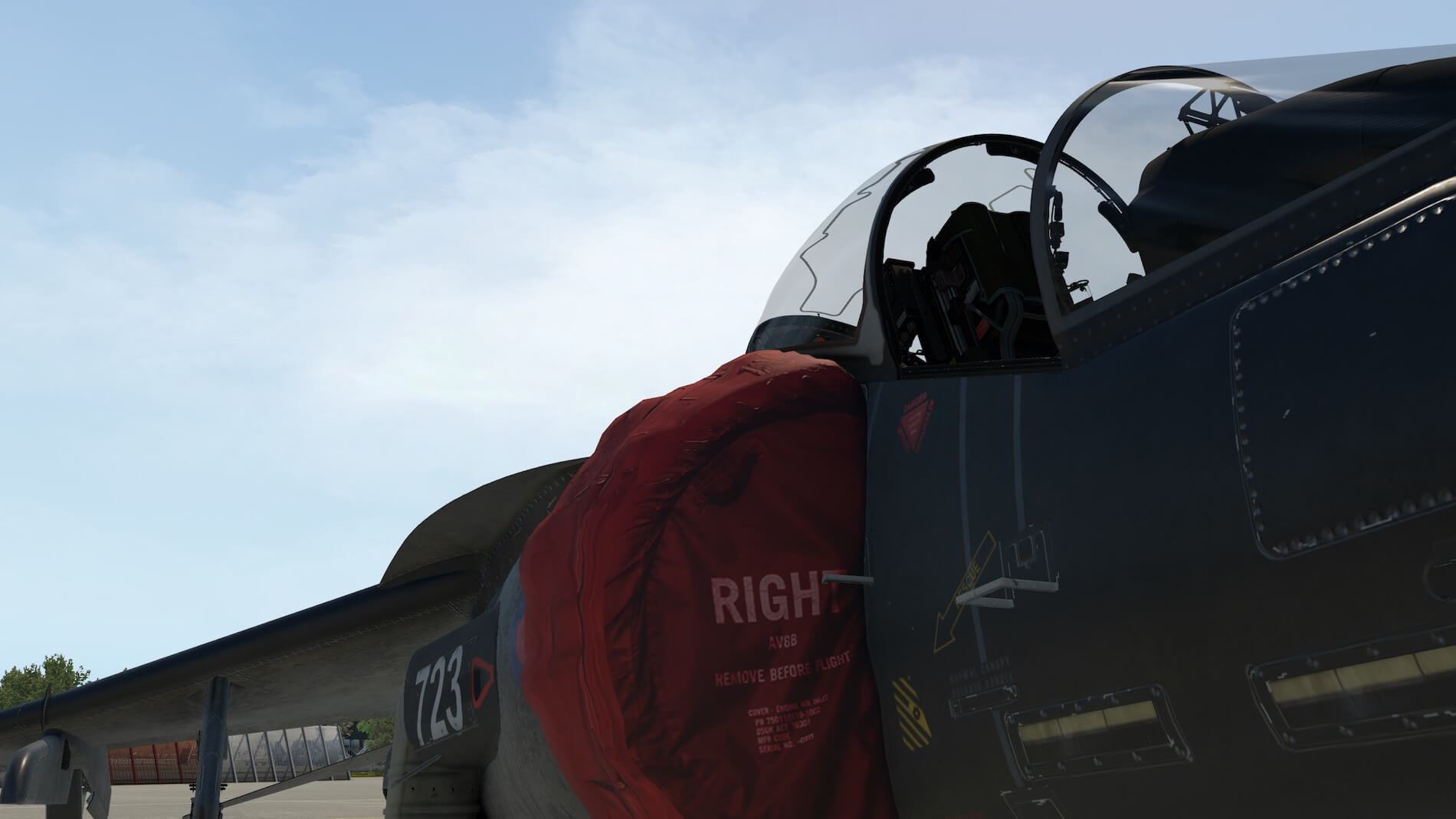








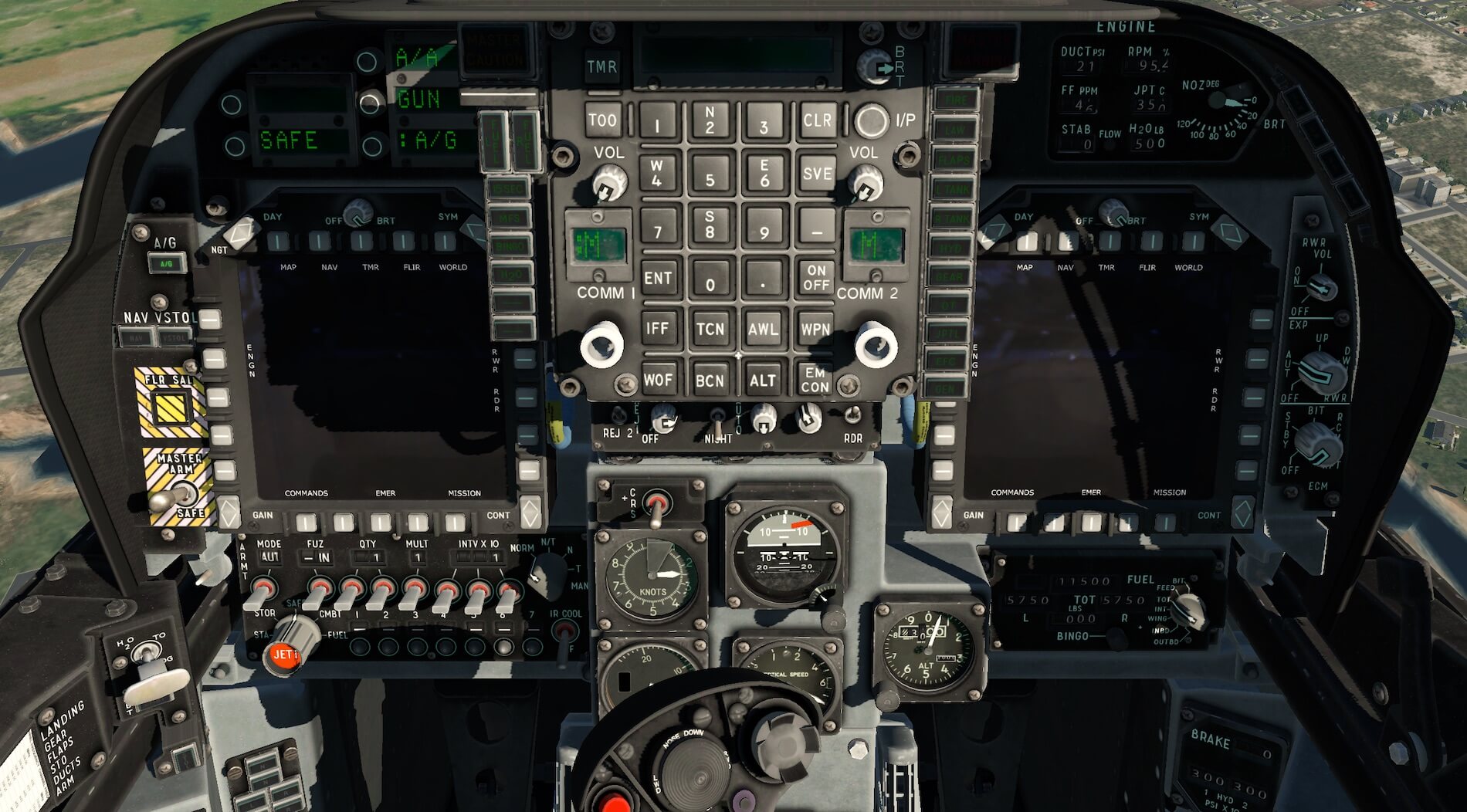
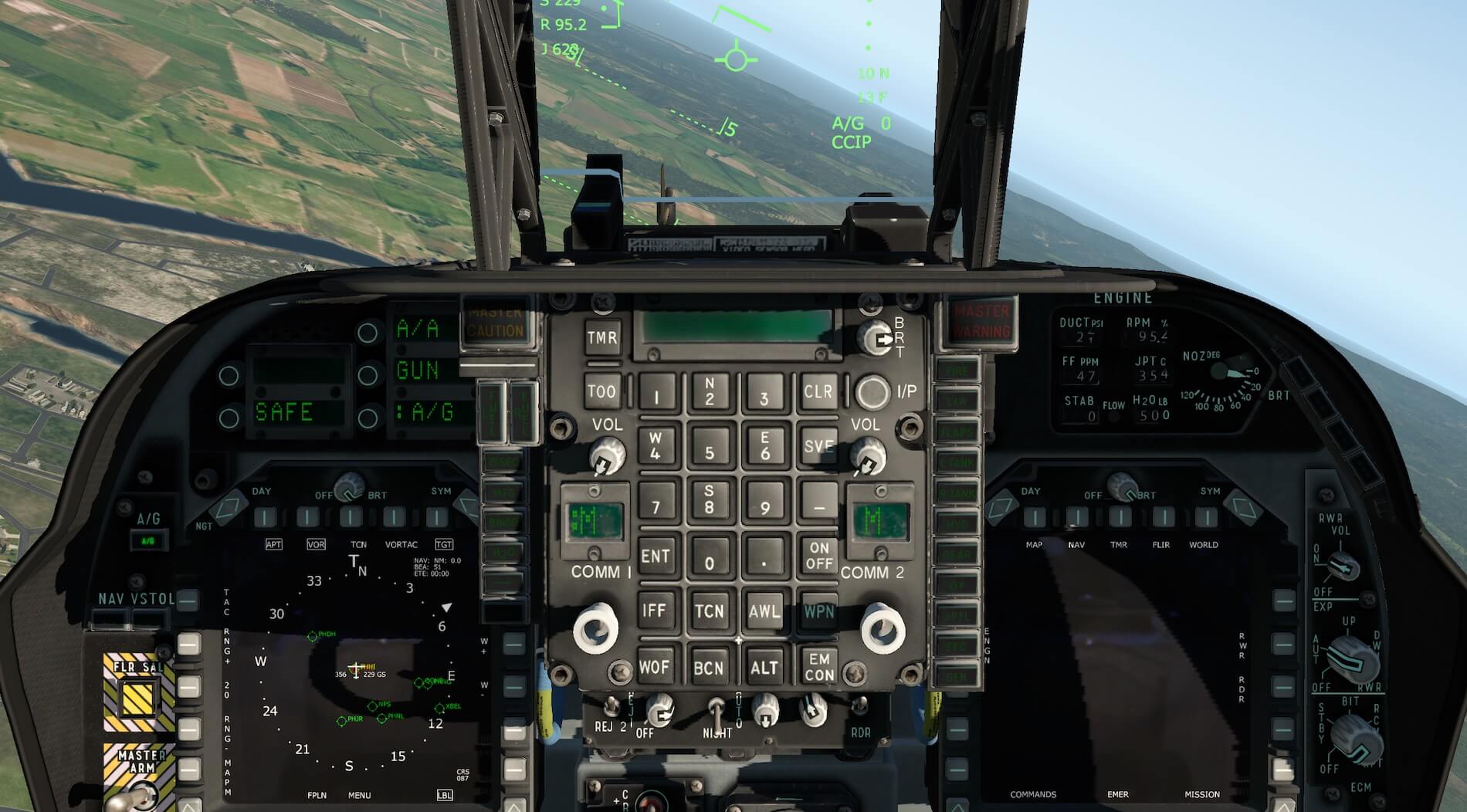

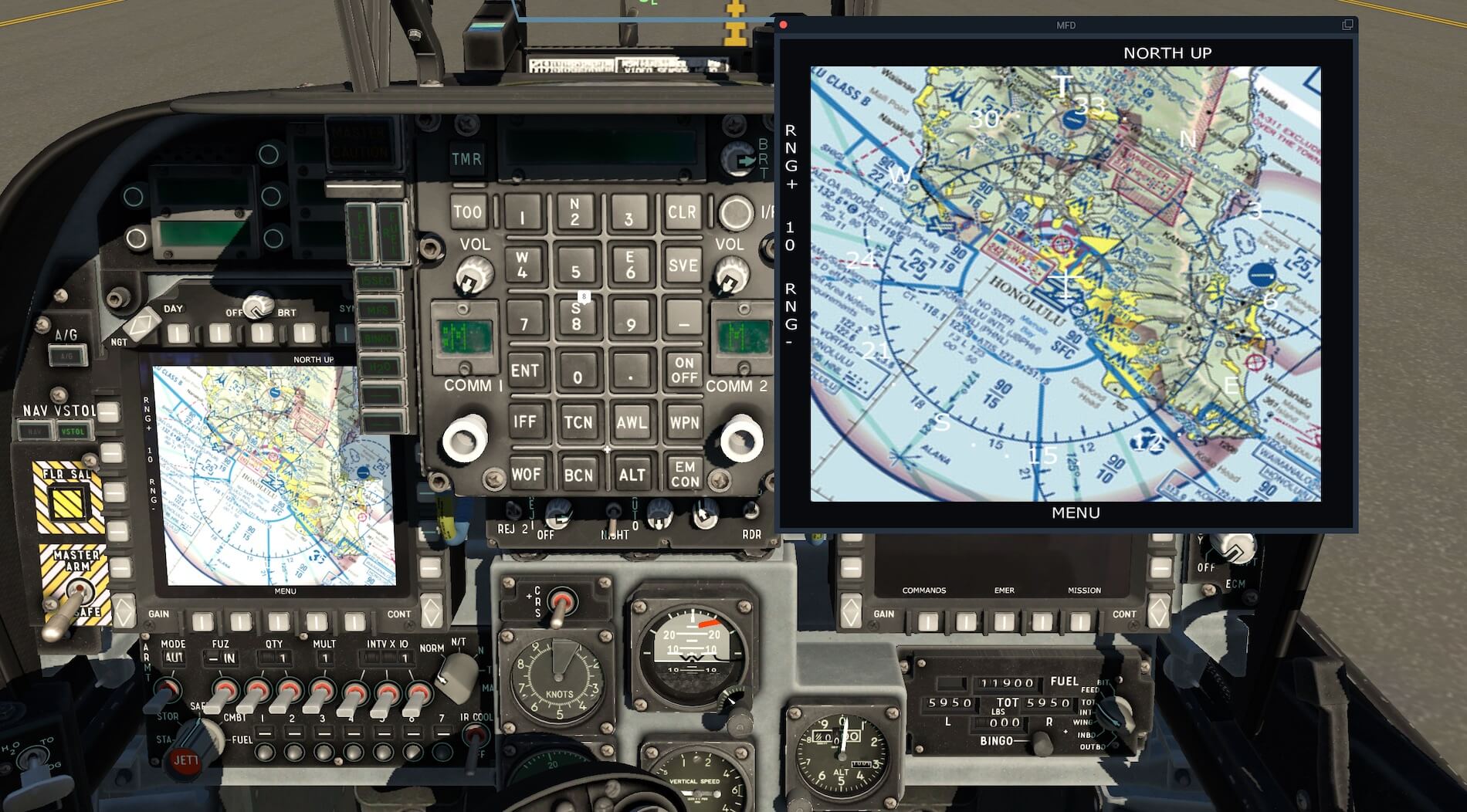

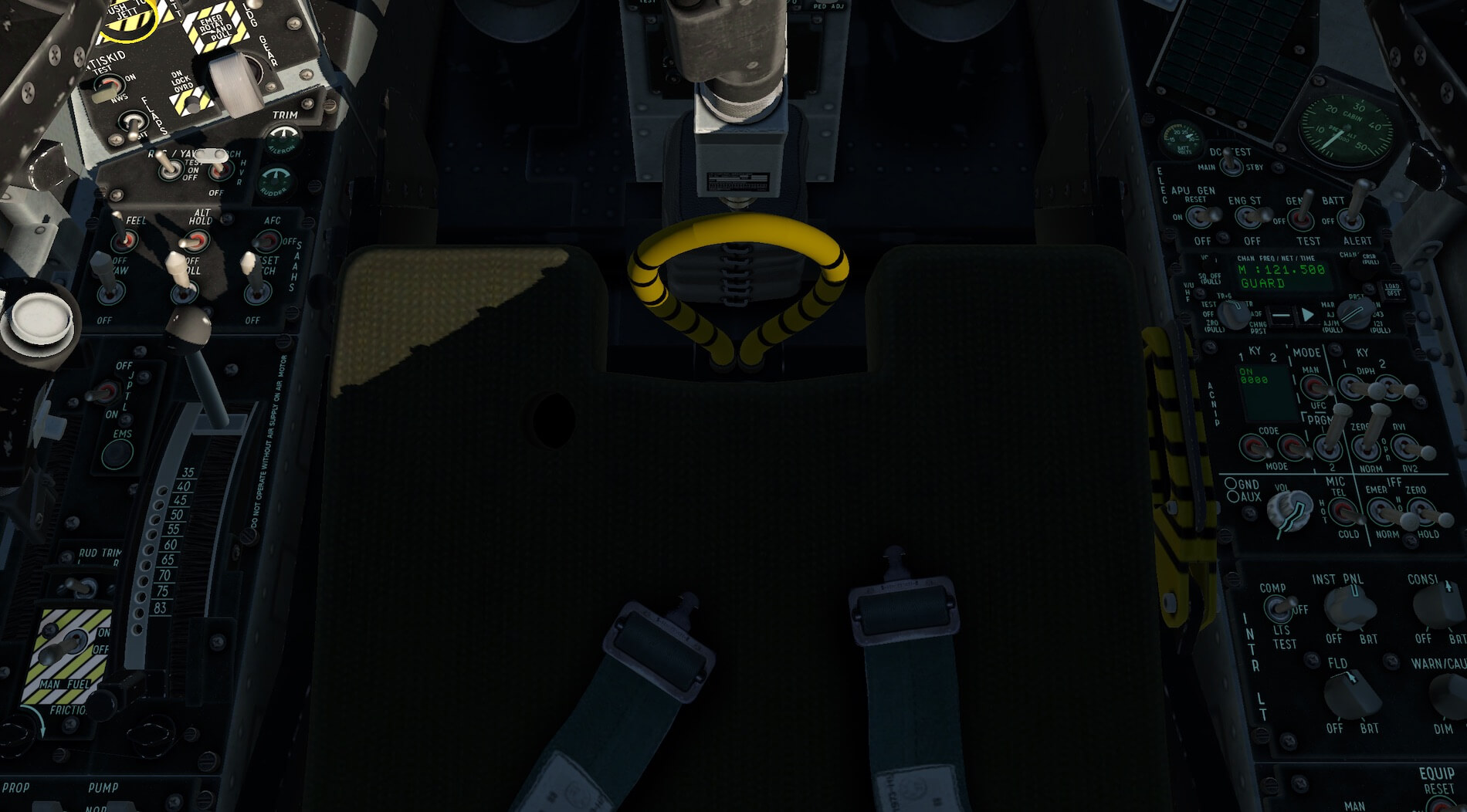

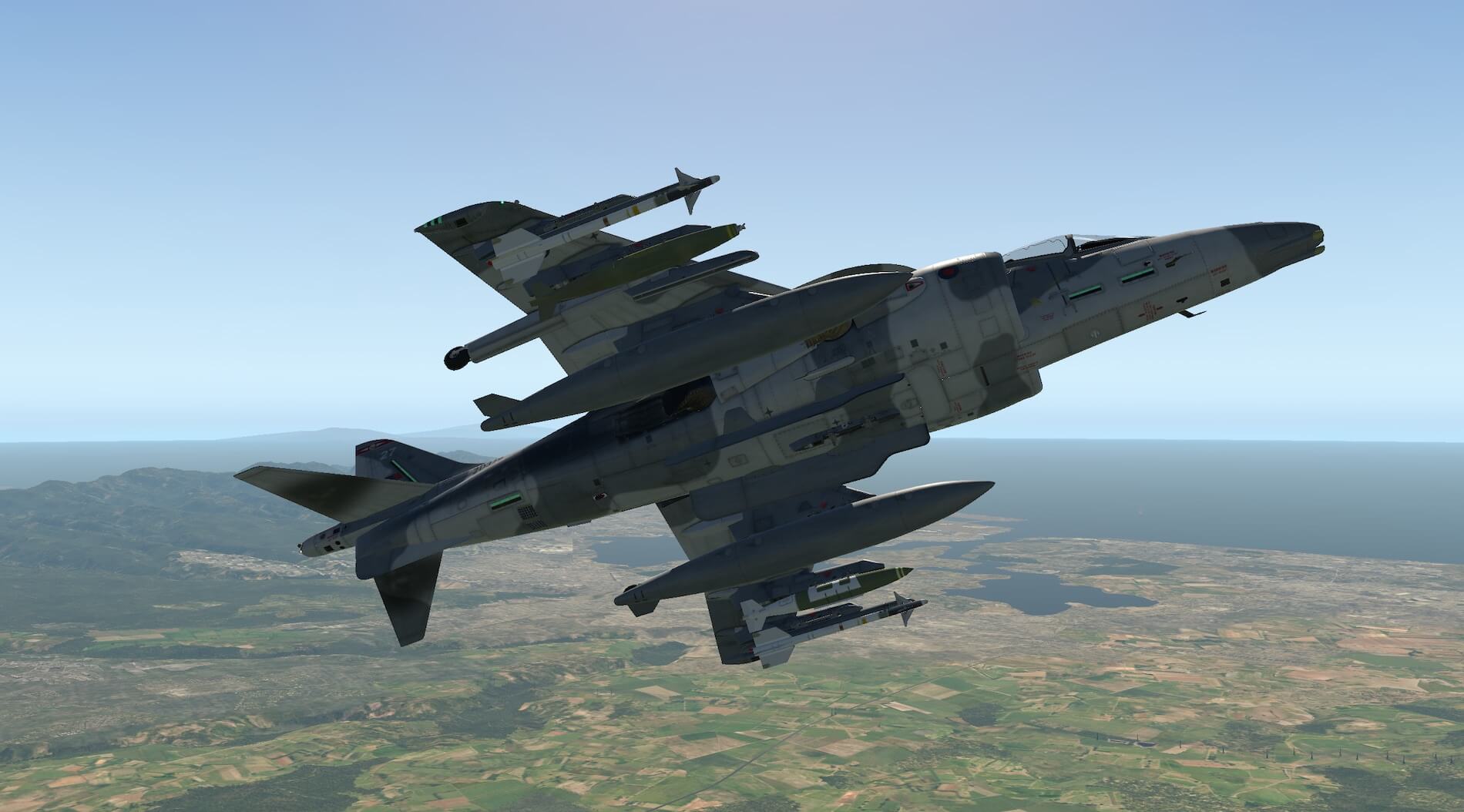

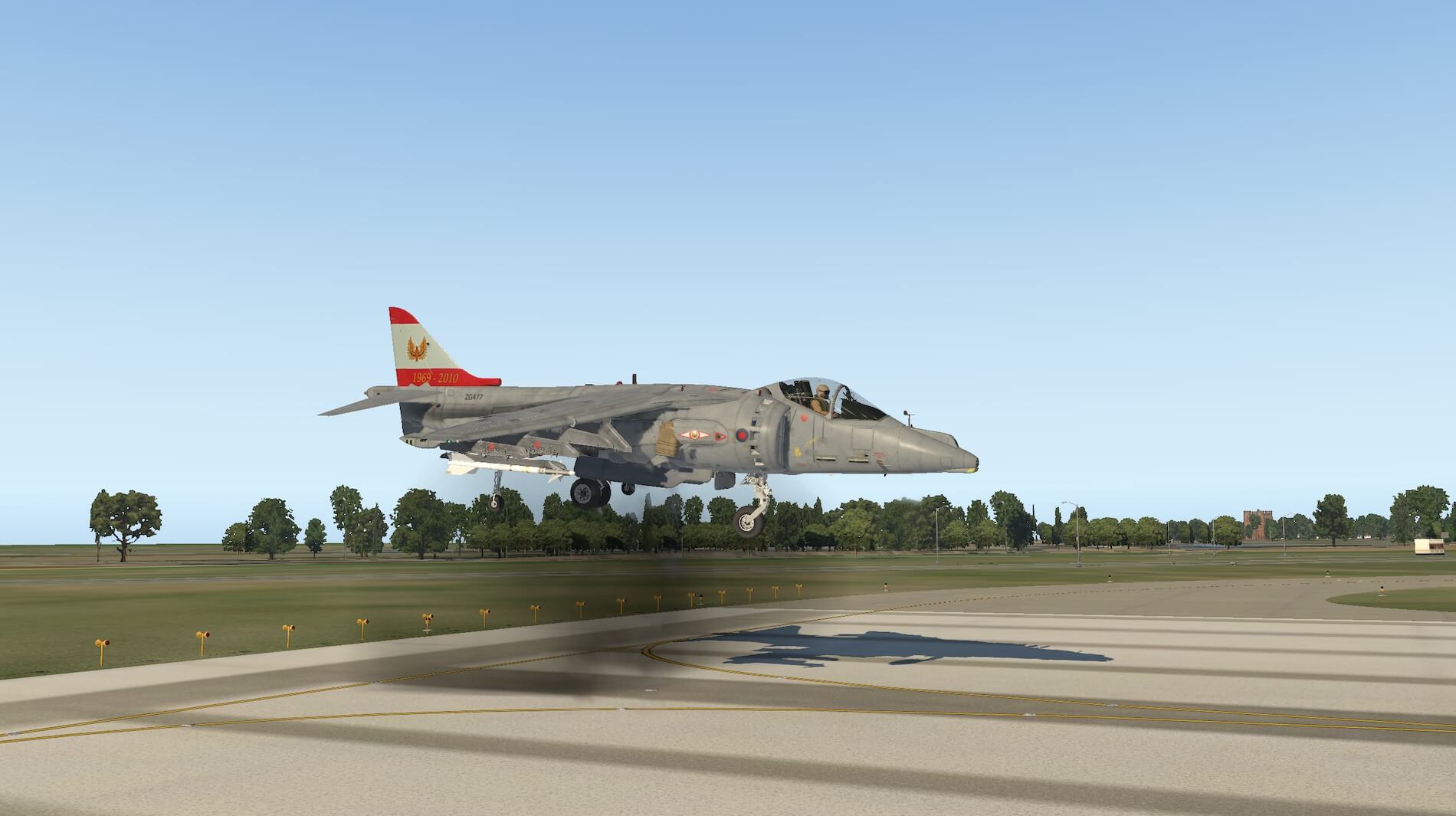



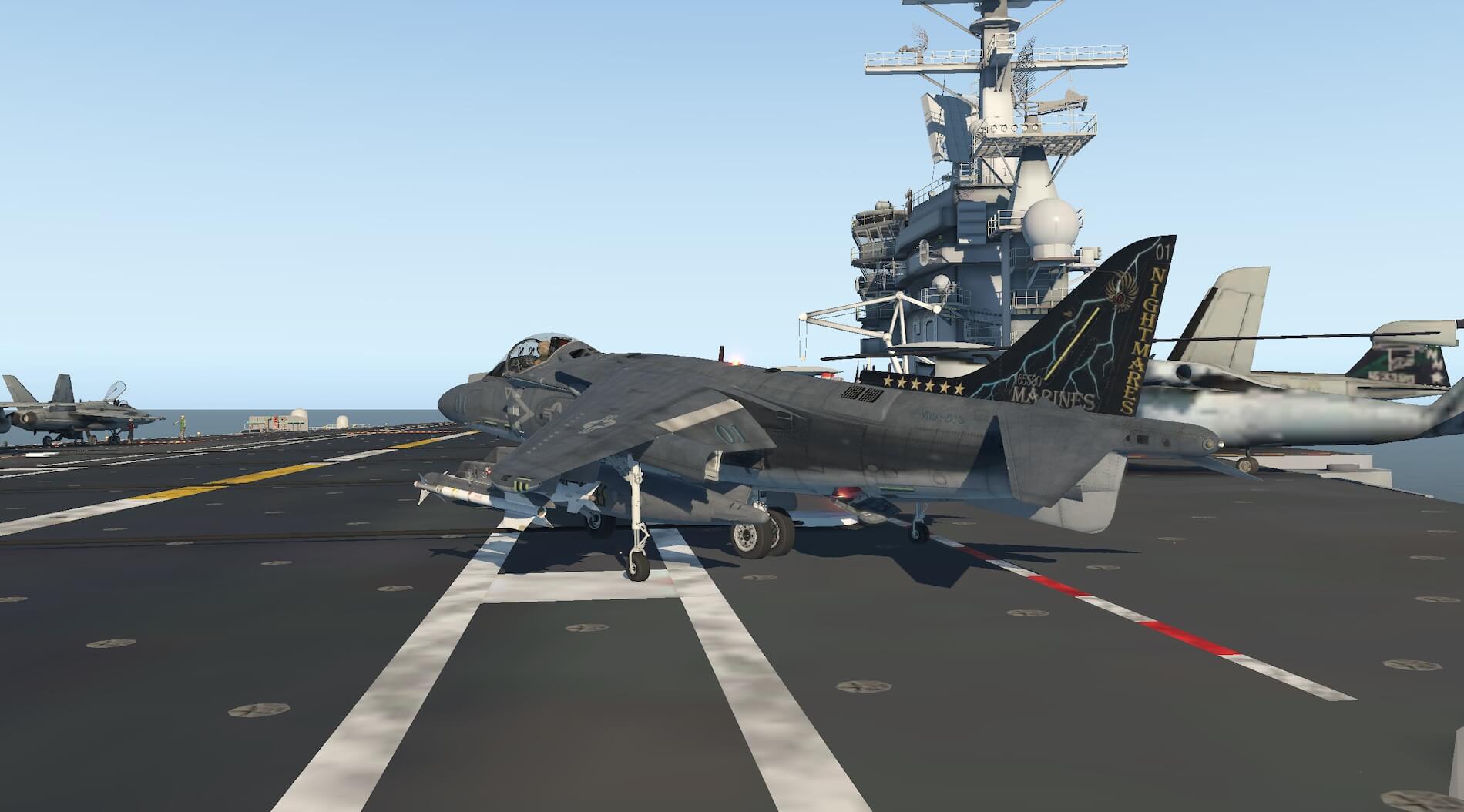











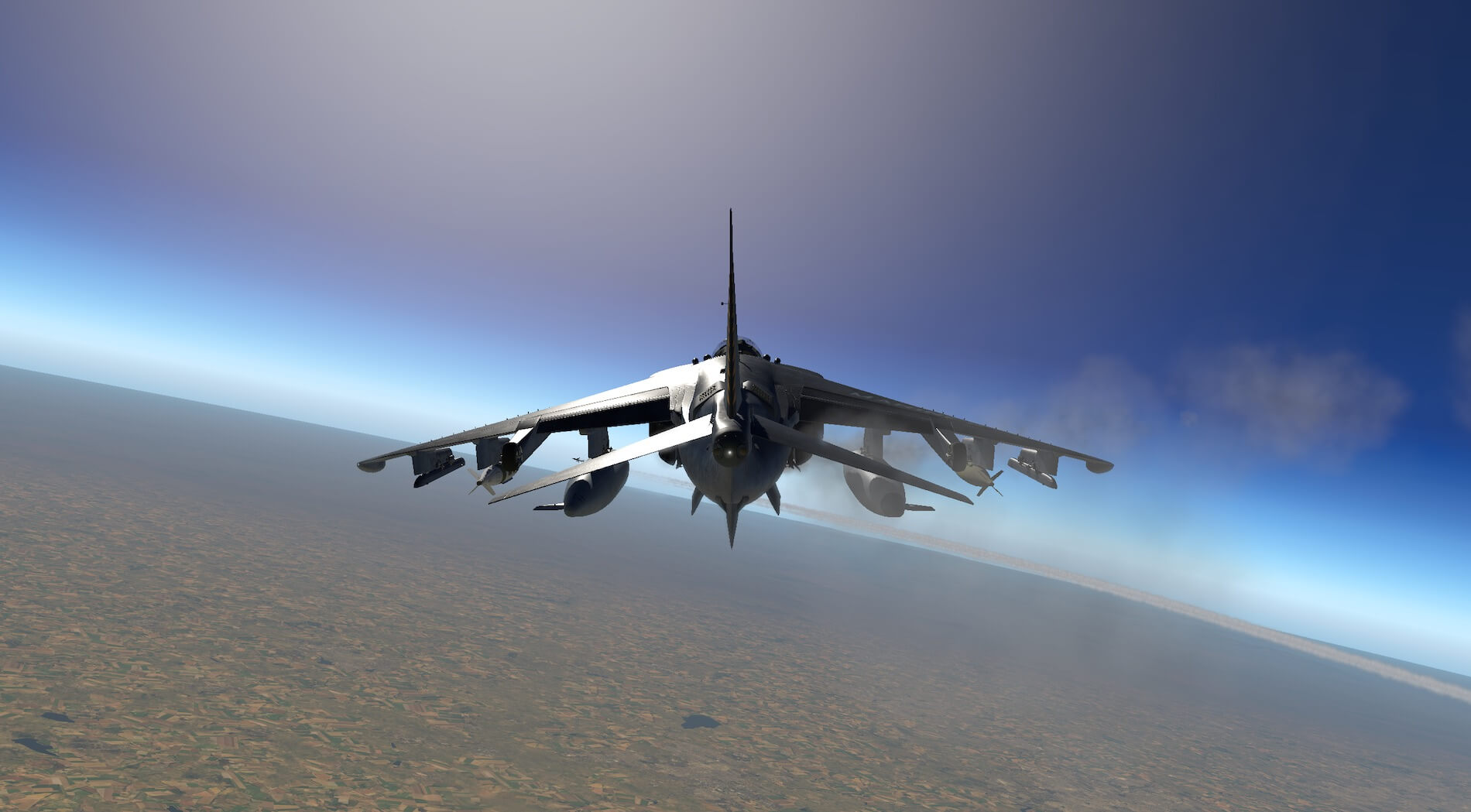


Thank you so much Andy and Angelique, excellent explanation, well supplemented with pictures, i learned more about this aircraft.
Hi, x-alberto here from x-trident (the plugin guy and system engineer of the team)
Thank you for the accuarate review.
The full manual and the checklists are now available here: https://forums.x-plane.org/index.php?/forums/topic/172166-flight-manual/
There are also some more quick guides here: https://forums.x-plane.org/index.php?/forums/topic/165930-addendum-to-the-quick-start-guide/
A patch is available here: https://forums.x-plane.org/index.php?/forums/topic/166277-plugin-patch/
It fixes some bugs, and adds some features (including automated\animated air to air refuling)
We are soon going to release a full update includind the custom carrier “Nave Cavour”
Coming to the review, I loved (among other things) how you captured one important aspect of the design of our models. We try to make them as realistic as it is reasonable to achieve while, at the same time, keeping them usable for a casual flight (as you can imagine those are conflicting goals)
Ciao
Alberto
Hello,
the full version (1.1) is out now. Free update for all users.
Cheers
Alberto
Hello,
Version 1.1 is out now (this is the full release).
Free update for all users.
Cheers
Alberto
Andy and Angelique! What a great job has been done here with a review of this aircraft! Almost rushed out and bought one, maybe this weekend!
Just wanted to say, having served on a US aircraft carrier, and watching real pilots land for the first time (A-6s and F-14s) during flight quals, it was the most exhilarating experience for me just WATCHING them. My thanks to all that served and put their lives on the line daily for their country, whomever they served.
Speaking of harriers, our ship the USS JFK ran into the USSR carrier Kiev, which also had somewhat VSTOL type aircraft, as their bow was curved up and they were designed for a short takeoff. In this instance, and this was in the 1980s, they could not because the US aircraft were flying in a “offensive pattern”. Thankfully it all worked out peacefully in the end, but reading the review and harriers on an aircraft carrier reminded me of this tense time so many years ago.
Thanks all – safe and happy flying!